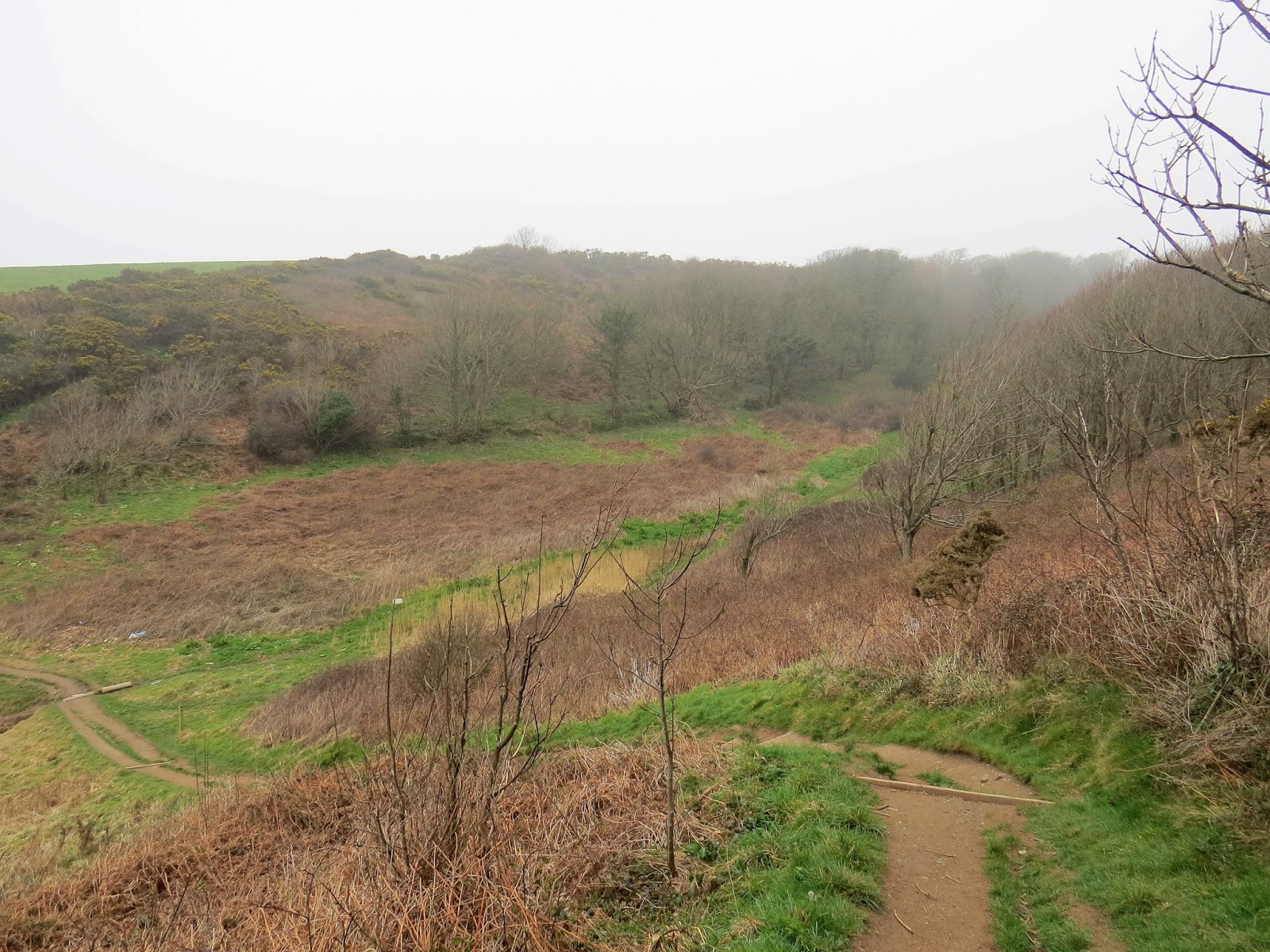Mouth of the River Fowey in fog with St. Catherine's Point to the left
and St. Saviour's Point to the right (Simon Colenutt)
The habitat along this stretch of coast consists of open improved grassland fields, coastal scrub and narrow coombes which look ideal for migrants. The best of these was Coombe Haven which while relatively bird-less certainly looked to have potential for picking up incoming migrants.
Coombe Haven (Simon Colenutt)
There were many spring flowers in Coombe Haven including numerous Primrose and my first Opposite-leaved Golden-saxifrage of the spring. This is a classic plant of wet ground and flushes in woodlands and is one of my favourite spring species.

Opposite-leaved Golden-saxifrage (Simon Colenutt)
The only migrant bird that I encountered was a small 'group' of six Chiffchaff which appeared to be newly arrived foraging amongst the Gorse and on the dew covered ground.
Chiffchaff, Southground Point (Simon Colenutt)
We spent the rest of the weekend relaxing in our cottage west of St. Ives and while I ventured out birding in the early mornings things seemed to be pretty slow going. I added Great-northern Diver and Hen Harrier, a superb male, to my patch that extends walking distance from the cottage and includes Pen Enys Point and Carn Naun Point along the north Cornish coast.
Carn Naun Point from Pen Enys Point (Simon Colenutt)
On Saturday morning I birded the Marazion and Penzance area. A juvenile Glaucous Gull was present on the rocks known as Great Hogus between Marazion and St. Michael's Mount and the first-winter male Surf Scoter that has been present off Penzance since 9th February 2014 showed distantly off the bus station. This bird is close to adult plumage showing a well developed bill pattern close to that of an adult Surf Scoter with the red bridge and black lozenge to the side.





